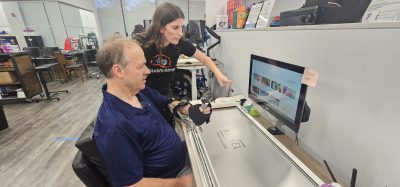Puzzle Master Shortz Looks to Solve Challenge of Coming Back From Stroke
News Based on facts, either observed and verified directly by the reporter, or reported and verified from knowledgeable sources.

Will Shortz has always been active, but one Sunday last February his life changed in an instant.
The New York Times crossword puzzle editor, puzzle master for NPR for the past 37 years and co-owner of the Westchester Table Tennis Center in Pleasantville was at home when he suddenly lost control of part of his body.
“I leaned to the left and I realized I couldn’t lean back to the right, and I had drool coming out of the side of my mouth,” Shortz described of his unexpected challenge.
Immediately, he knew he was one of the nearly 800,000 Americans who experience a stroke each year. In the nine months since that scare, Shortz has been determinedly working to give himself the best chance of having as full a recovery as possible, having gone to Phelps Hospital twice a week, Rehabologym in Tarrytown for additional sessions and also working with a personal physical therapist at home.
The rehab efforts followed stays at Burke in White Plains, an acute rehabilitation center, followed by a subacute facility in Briarcliff Manor.
Fortunately for Shortz, 72, a longtime Pleasantville resident, he found himself at Northern Westchester Hospital within an hour after the stroke. He was able to call his friend and partner who called for an ambulance, and was quickly under the care of medical staff.
Marko Grzan, senior physical therapist at Phelps, who has been working with Shortz, said his stroke affected the motor cortex of his brain, which means that he has had difficulty using the left side of his body. The part of the brain that is impacted from a stroke can help determine how much ability the person can recover following physical therapy, he said.
While improvement can be seen for roughly for up to two years following a stroke, how much a person can be restored is often guesswork, Grzan said. A combination of many factors, including how well a patient’s body heals itself, their outlook and their health and strength level before the stroke can all play a part. Sometimes patients have to fight depression, or if they’re older and more infirm, it’s difficult for them to push themselves through what may seem like punishing physical exertion, he said.
“Every patient that I work with that has a stroke, they always ask me the question: Am I going to get back to completely normal?” Grzan said. “I always give them the same answer: I don’t know. Basically, we have to take it day by day and we have to take it step by step.”
Luckily for Shortz, while the stroke affected his left side, it spared him the cognitive issues that can sometimes accompany a stroke. He initially had trouble typing, but was still able to create and draft his puzzles by hand.
“I was fortunate that my stroke really hadn’t affected by thinking ability, so while I couldn’t type my puzzle, I had to write them first,” Shortz explained. “Now, I’m putting them on my computer.”
Of course, Shortz also has to fight the urge not to think too far ahead and wonder what his condition may be.
“I’m an eternal optimist. I’m always thinking positively, but there’s a part of me that asks why is it taking so long,” he added. “Will I ever get back to the way I was? I’ve made my health my number one priority.”
Shortz is also changing some habits. He acknowledged knowing that he had high blood pressure for years, but didn’t do anything to address it. Now, he’s taking medications to keep his blood pressure and cholesterol level at optimal levels.
He also has stopped having his go-to lunch, which was canned soup on most days. It is high in sodium and can affect blood pressure.
Even the initial two-year window at times can be misleading because every individual is different, Grzan said. However, Shortz is enthusiastically embracing the road ahead.
“Will is the ideal candidate to make gains,” Grzan mentioned. “He works extraordinarily hard and wants to improve.”
Initially, Shortz had a cane with a wide base, but now uses a convention to help him ambulate, Grazan added.
Shortz, who had his iron man streak of playing table tennis for 4,141 consecutive days as a result of the stroke, is back to playing his beloved sport. At first, he had to play while seated in a wheelchair. While his lateral movement remains compromised, he can play while standing.
He’s also made accommodations at home, including putting in a contraption that slides him into the tub while he’s seated, which enables him to take a shower on his own. Shortz is also able to navigate the steps in his house.
One task that has been challenging is getting in and out of a car, even as a passenger. Shortz said he will not drive until he feels that he can operate a vehicle confidently.
While progress at times can be painstakingly slow despite the hard work, Shortz makes sure not to put too much pressure on himself.
“It’s like any challenge in life – work with what you have and build from there,” he said.

Martin has more than 30 years experience covering local news in Westchester and Putnam counties, including a frequent focus on zoning and planning issues. He has been editor-in-chief of The Examiner since its inception in 2007. Read more from Martin’s editor-author bio here. Read Martin’s archived work here: https://www.theexaminernews.com/author/martin-wilbur2007/
